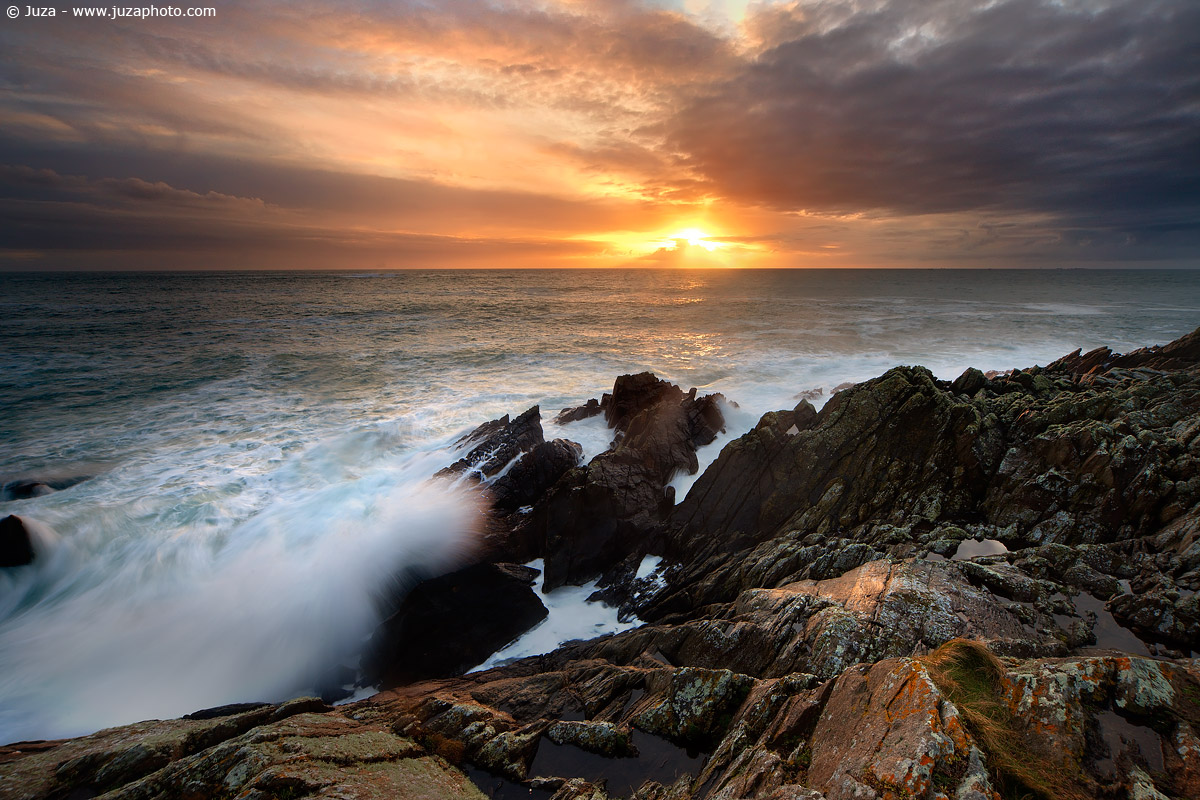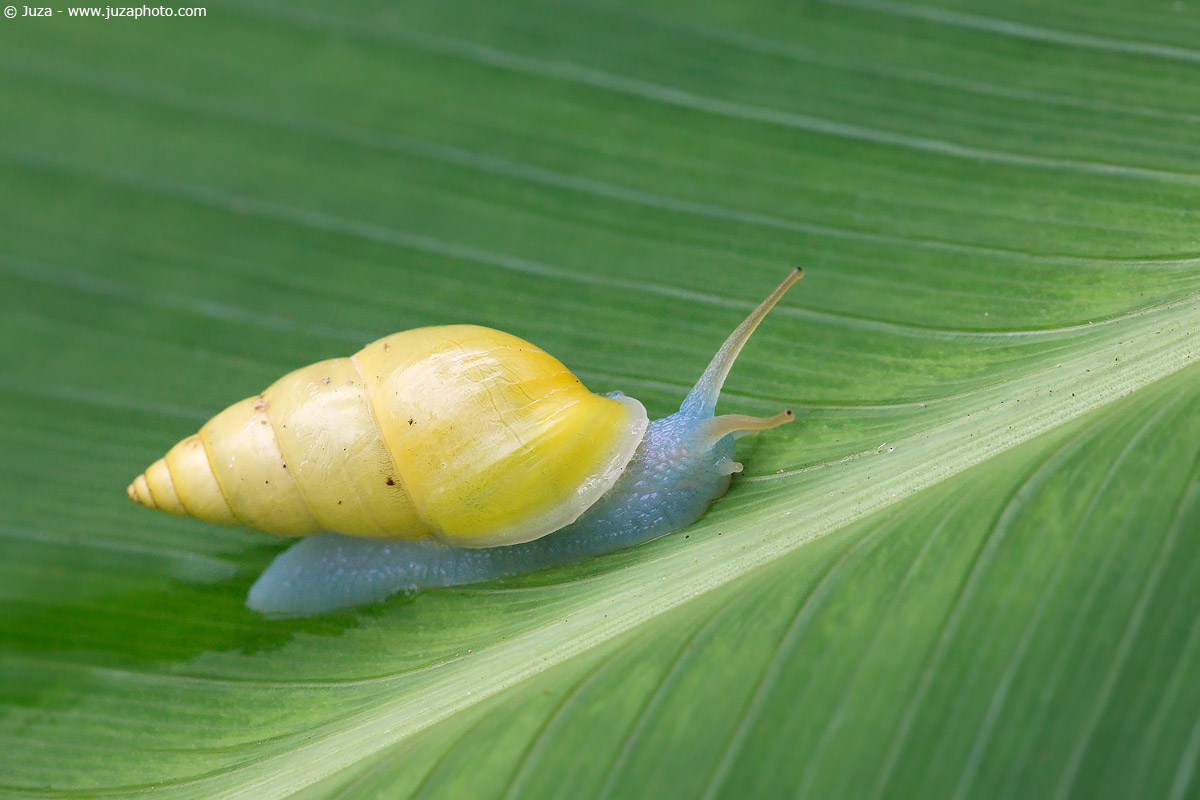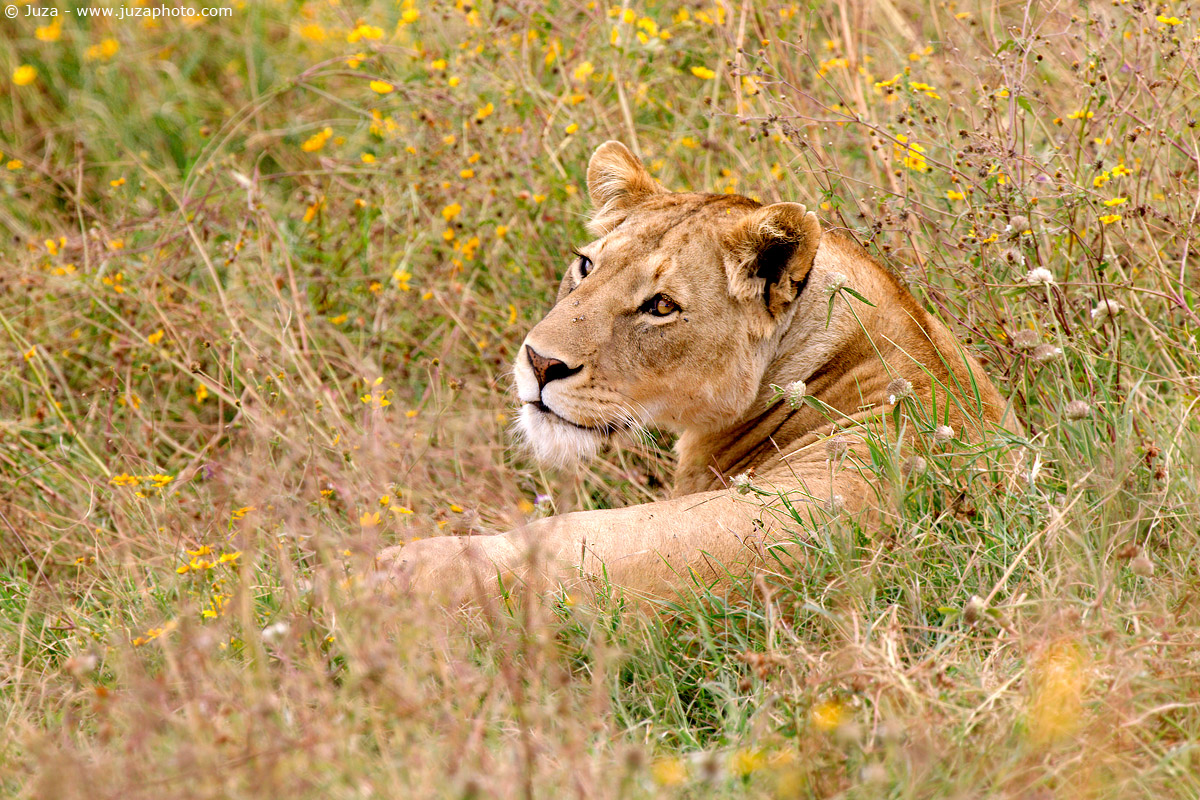Four lenses for nature photography
How many lenses do you need for all around nature photography? In my opinion, four lenses are enough for almost every nature subject, from landscapes to macro and wildlife. Of course, everyone has personal preferences and different necessities, but this four lenses lineup gives an idea of a good "all around" lineup, and it is what works well for me.
The super wide angle : the ideal lens for landscapes

Sunset from St. Mathieu - Canon EOS 1Ds Mark III, Sigma 12-24mm f/4.5-5.6 EX DG HSM, 0.3" f/16, iso 50, tripod. St. Mathieu, France.
Wide-angles are excellent for landscapes. These lenses allow to capture the vastness of the landscape, and they give an exaggerated perspective that adds depth to the photos, in particular when you place something in the close foreground. The super wide angles are not "easy" lenses: due to the large angle of view, you have to be very careful about composition. A wide-angle zoom is the ideal choice: it combines the large angle of view of the wide lens and the flexibility of the zoom.
All the major camera manufacturer have professional wide-angle zooms in their lineups (Canon 16-35 f/2.8, Nikkor 14-24 f/2.8). Unless you do a lot of night photography, the aperture has not much importance since you will use small apertures, like f/11 or f/16, to get a large depth of field. The most important things are the range of focal lengths and the sharpness.
Currently, I use the
Sigma 12-24mm f/4.5-5.6 EX DG lens ($ 850), that offers an amazing 122 degrees angle of view on fullframe cameras as the Nikon D700 or my Canon 1DsIII. I don't recommend it for APS-C cameras - the Sigma 10-20 is wider and offers better quality - but if you have a FF camera, the Sigma 12-24 is a great lens, that offers unparalleled creative possibilities thanks to its ultra-wide angle of view. If you have an APS-C camera, instead, I'd recommend the smaller, cheaper and slightly sharper Sigma 10-20mm (designed exclusively for cameras with APS-C sensors).
The standard zoom : the all-around lens

Child - Canon EOS 500D, Canon EF 24-105mm f/4 L IS USM, 1/200 f/4, iso 400, handheld. Madagascar.
A good all-around lens should be versatile: it must have a good range of focal lengths, a relatively wide aperture, excellent image quality, fast AF and image stabilization. There are dozens of standard zoom lenses from every manufacturer, with prices ranging from $100 for a 18-55 f/5.6 "kit lenses" to $1000 or more for professional zooms.
The
Canon EF 24-105mm f/4 L IS USM ($ 920) is my preferred all around lens: it is very versatile thanks for the wide range of focal lengths and the image stabilization; it bright enough for low-light photography, and it has weather sealing and a superb built quality. It is the ideal lens for travel and landscapes, in particular on fullframe cameras, but it works really well even with an APS-C camera, if you already have a super-wide angle to cover the shortest focal lengths.
The macro lens: a closer look

Snail - Canon EOS 1Ds Mark III, Canon EF 180mm f/3.5 L USM, 1/200 f/11, iso 1600, tripod. La Selva, Costa Rica.
If you like macro photography, a macro lens is a worthwhile addition to your lineup. Macro lenses allow to reach "life-size ratio" (1:1), and usually they have excellent image quality. There are various macro focal lengths, from 50 to 200mm: all them give 1:1 at the minimum focusing distance, but the longer lenses have three important advantages: 1) they allow to isolate the subject against a distant, out of focus background 2) they give you enough working distance to photograph shy subjects as butterflies 3) they have the tripod collar, that gives more freedom to compose the image, in particular when you photograph from weird angles.
Even though now I use the
Canon 180 Macro L, usually I recommend the Sigma 180mm f/3.5 Macro EX DG ($ 725), that offers the same image quality at a much lower price. I recommend the Canon 180 Macro only if you plan to take a lot of macro photos with teleconverters, and you already have the Canon TCs: the Sigma lens is not compatible with Canon TCs.
Tele or super-tele lenses: reach for wildlife

Lion - Canon EOS 1DsIII, Canon EF 300mm f/2.8 L IS USM, Canon 2.0x TC, 1/500 f/7.1, iso 400, handheld. Ngorongoro, Tanzania.
If you are seriously interested in wildlife and bird photography, you need a tele lens, either a prime or a tele zoom. The tele zooms are great lenses for wildlife, some birds and many other subjects: they allow to isolate details of the landscape, and they can be used as close-up lens for subjects of the size of a large butterfly. While these lenses don't reach real macro ratios, they gives quite good magnification - usually 1:4 or 1:5 at the longest focal, with a working distance of 1.5 meters or more.
The Canon EF 100-400mm f/4.5-5.6 L IS USM ($1250) is my preferred tele zoom, even though it is not perfect. It has a very good reach, excellent built quality and good AF. It has image stabilization, even though is it first generation IS (less effective than the latest version and not usable on tripod). The aperture, while not very bright (f/4-5.6) is an excellent compromise between brightness and portability - a larger aperture would make the lens much bigger and heavier. The image quality is great between 100 and 300mm; at 400mm it is a bit softer, but still quite good, even for large prints. While it is not featherweight, it is very easy to handheld, and it is small enough to be carried everywhere, even when you have to walk a lot. In my opinion, this lens is a much better choice than primes as the 300 f/4 IS or the 400 5.6, because the versatility of the zoom is really an huge plus.
If you want the maximum image quality and reach, the professional, bright prime lenses are the way to go: 300 f/2.8, a 400 f/2.8, a 500 f/4 or 600 f/4. These are big and heavy lenses, that you won't carry everywhere, but in some situations they allows to take otherwise impossible photos, thanks to their extreme reach, super fast AF and wide aperture. Moreover, the super-tele prime lenses are very sharp, and you can use them with the 1.4x TC or 2.0x TC maintaining excellent image quality, to capture even the most shy subject. In the past I've used a lot the Canon EF 600 f4 L IS; it is a superb and unique lens, that can be coupled with 1.4x and 2x TC to reach 840 and 1200mm. On the other hand, it is also the biggest and heaviest lens of the Canon lineup (and it costs nearly $7200). It is a great choice for pro wildlife photographers, even though the 500 f/4 may be a better choice if you have to carry it around a lot (it is smaller and 1.5kg lighter).
Currently, I still have the 600 f/4 IS, but often I prefer to use the Canon 300mm f/2.8 L IS USM ($ 3700): even though it has less reach than the 600 f4, it is a lot smaller and lighter, and it becomes a very good 420mm f/4 with the 1.4x and a good 600 f/5.6 with the 2x. It is quite easy to carry around, and I can handhold it all the day with little effort.





 JuzaPhoto contains affiliate links from Amazon and Ebay and JuzaPhoto earn a commission in case of purchase through affiliate links.
JuzaPhoto contains affiliate links from Amazon and Ebay and JuzaPhoto earn a commission in case of purchase through affiliate links.